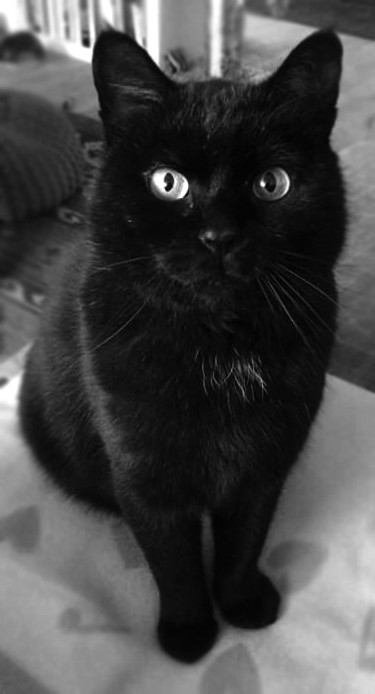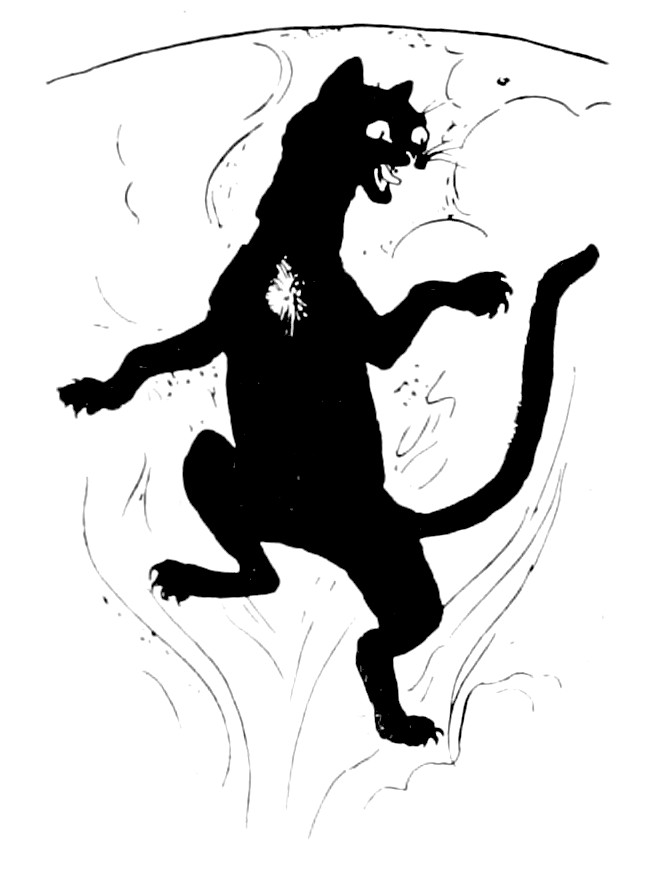Black cats, often shrouded in mystery and myth, have captivated human imagination for centuries. Across many cultures, they are frequently seen as omens of bad luck, symbols of witchcraft, and figures of fear. However, beneath the layers of superstition, there’s a fascinating world of folklore and unique characteristics that make these felines truly special. One such intriguing feature is the occasional white spot that graces the sleek, dark fur of some black cats. This small mark, often appearing on the chest, raises questions and sparks curiosity: Is it just a genetic quirk, or is there a deeper meaning woven into the myths surrounding black cats with white spots?
 Zero_zw
Zero_zw
Unraveling the Myths: Black Cats and Superstition
The association of black cats with misfortune is deeply rooted in history, particularly in Western cultures. Dating back to the Middle Ages, black cats became entangled with tales of witchcraft and devilry. During this era, when fear and superstition were rampant, black cats were often seen as companions to witches or even witches in disguise. This dark reputation led to widespread persecution, tragically impacting countless innocent felines.
However, it’s important to note that not all cultures view black cats with such trepidation. In contrast to Western beliefs, some societies consider black cats symbols of good fortune. For example, in Britain and Japan, encountering a black cat is often seen as a positive omen, bringing luck and prosperity. This duality in perception highlights the complex and varied relationship humans have with these enigmatic creatures.
God’s Thumbprint or Angel’s Kiss: The White Spot Explained
Among the intriguing folklore surrounding black cats, the presence of a white spot holds a particularly unique place. A charming legend suggests that these white patches are far from random genetic occurrences. Instead, they are often referred to as “God’s Thumbprint” or “An Angel’s Kiss,” believed to be marks of divine favor or protection.
This belief is said to stem from medieval times when the fear of witchcraft was at its peak. During witch hunts, women accused of witchcraft and their feline companions, often black cats, faced dire consequences. However, a fascinating twist emerged in these dark times. It was believed that if a black cat possessed even a small white spot, it was a sign of God’s presence, offering a form of salvation from persecution. This “divine mark” was thought to protect the cat, setting it apart from those deemed purely associated with darkness. While this story is folklore and not scientifically proven, it adds a layer of mystique to black cats with white spots, suggesting they are not just ordinary felines but perhaps touched by something special.
Historical Persecution and the Survival of White Spots
The grim history of black cat persecution during witch trials inadvertently plays into a speculative, albeit unconfirmed, theory about the prevalence of white spots in black cat populations. The narrative suggests that during periods of intense witch hunts, completely black cats were more likely to be targeted and eliminated due to their association with evil. Cats with white markings, perceived as having divine protection, might have been spared more often.
This hypothetical “unnatural selection” process could have, over generations, contributed to a higher proportion of black cats carrying genes for white spotting. While modern genetics offers scientific explanations for white spots in cats, this folklore-inspired theory provides a compelling, albeit dark, historical context to the phenomenon.
Cat Sìth: The Celtic Fairy Cat with a White Mark
 Cat_Sidhe
Cat_Sidhe
Delving deeper into the lore of black cats with white spots leads us to the captivating figure of the Cat Sìth (pronounced Cat Shee). This creature originates from Celtic mythology, particularly Scottish and Irish folklore. The Cat Sìth is described as a fairy creature, a large, spectral black cat distinguished by a prominent white spot on its chest.
Legend paints the Cat Sìth as haunting the Scottish Highlands, a creature of both mystery and fear. Folklore often blurs the lines between fairy and witch, with some tales suggesting the Cat Sìth was not a fairy at all, but a witch capable of transforming into a cat, albeit only nine times. This shapeshifting ability further fueled the enigmatic nature of the Cat Sìth in Celtic traditions.
Appearance and Soul-Stealing Beliefs
The defining characteristic of the Cat Sìth, beyond its large size and black fur, is the white spot on its chest. Descriptions often emphasize its imposing presence, as large as a dog, with an arched back and erect fur, creating a formidable and otherworldly appearance.
Beyond its appearance, the Cat Sìth was deeply embedded in Highland beliefs surrounding death and the soul. It was feared for its supposed ability to steal a person’s soul as it passed over a corpse before burial. To prevent this, elaborate vigils known as Feill Fadalach (Late Wake) were held. These weren’t somber affairs but lively gatherings with games, riddles, music, and even catnip, all intended to distract and keep the Cat Sìth away from the deceased. Interestingly, fires were forbidden in rooms where a body lay, as it was believed the warmth attracted the spectral cat. These practices highlight the significant role the Cat Sìth played in traditional Highland beliefs and rituals.
Possible Origins: Kellas Cats and Scottish Wildcats
The legend of the Cat Sìth may have roots in real-world felines inhabiting Scotland. The Kellas cat, a distinctive hybrid found in Scotland, is a likely candidate for inspiring the myth. Kellas cats are believed to be hybrids of Scottish wildcats and domestic cats, exhibiting a large, black, wildcat-like appearance with some domestic cat features. Scottish wildcats themselves are a subspecies of the European wildcat, native to Scotland but absent from other parts of the British Isles. The presence of these large, blackish cats in the Scottish wilderness for centuries, possibly millennia, could have easily given rise to the folklore surrounding the Cat Sìth.
Modern Encounters and Enduring Mystery
Even in modern times, the mystique of black cats with white spots persists. Anecdotal stories continue to circulate, adding to the rich tapestry of folklore. One such tale recounts a surprising event of a black cat with a white spot seemingly returning from the dead after being presumed buried. These contemporary stories, often shared through social media and online platforms, demonstrate the enduring fascination with these unique felines.
 Black_cat_dead
Black_cat_dead
Conclusion: A Mark of Mystery and Charm
Black cats with white spots occupy a fascinating intersection of superstition, folklore, and natural curiosity. While science provides genetic explanations for their markings, the enduring myths and legends surrounding them add a layer of charm and intrigue. Whether seen as touched by angels, survivors of dark times, or echoes of Celtic fairy creatures, these unique felines continue to capture our imaginations and remind us that even within the darkest of coats, there can be a spark of unexpected light.
